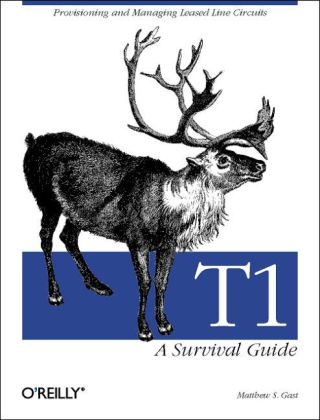Read more
If you haven't worked with T1 before, you could be in for an unpleasant surprise. If you have, you'll already know that T1, the current network standard for business and professional Internet access, is neither efficient, easy to use, nor particularly well-suited to data transmission. T1: A Survival Guide, a practical, applied reference on T1 data transport, is a life raft for navigating the shoals of a 40-year-old technology originally designed for AT&T's voice network.
Throughout T1's long life, network administrators have mainly learned it by apprenticeship, stumbling on troubleshooting tidbits and filing them away until they were needed again. This book brings together in one reference the information you need to set up, test, and troubleshoot T1.
T1: A Survival Guide covers the following broad topics: - What components are needed to build a T1 line, and how those components interact to transmit data effectively - How to use standardized link layer protocols to adapt the T1 physical layer to work with data networks - How to troubleshoot problems and work with the telephone company, equipment manufacturers, and Internet service providers
In spite of its limitations, T1 is a proven, reliable technology that currently meets the need for medium-speed, high reliability Internet access by institutions of many sizes, and it's likely to be around for a while. T1: A Survival Guide will take the guesswork out of using T1 as a data transport.
List of contents
Preface
Chapter 1: History of the U.S. Telephone Network
Chapter 2: T1 Architectural Overview
Chapter 3: Basic Digital Transmission on Telephone Networks
Chapter 4: Multiplexing and the T-carrier Hierarchy
Chapter 5: Timing, Clocking,and Synchronization in the T-carrier System
Chapter 6: Mysteries of theCSU/DSU
Chapter 7: Connecting the Umbilicus: GettingT1 Connectivity
Chapter 8: High-Level Data Link Control Protocol (HDLC)
Chapter 9: PPP
Chapter 10: Frame Relay
Chapter 11: T1 Troubleshooting
Access Aggregation with cT1 andISDN PRI
Multilink PPP
T1 Performance Monitoring
SNMP
Cable Pinouts and Serial Information
Reference
Glossary
Colophon
About the author
Matthew Gast is the director of product management at Aerohive Networks responsible for the software that powers Aerohive's networking devices. He has been active within the Wi-Fi community, serving as the chair of both security task groups at the Wi-Fi Alliance, where he leads efforts to extend the Wi-Fi Protected Access (WPA) certification to incorporate newly developed security technologies and drive adoption of the strongest forms of security by network administrators. He also led the Wi-Fi Alliance's Wireless marketing task group's investigation of certification requirements for new power saving technologies. Matthew is also the past chair of the 802.11 revision task group of the 802.11 Working Group.
Summary
This practical, applied reference to T1 for system and network administrators brings together the information needed to set up, test and troubleshoot T1.

